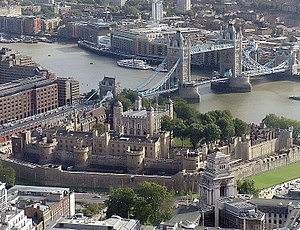Based on Plutarch’s paradox of whether a ship whose parts
have been changed can be considered to be the same ship as it was before, the
film, Ship of Theseus, by Anand Gandhi, explores this issue through three lives
and their stories come together in the end for these people have received their
new parts through one donor, a hobbyist cave explorer whose film they come to
see at a private screening and where they meet each other as separate
individuals united by the fact that each of them has a part of one man, now a
part of them.
The first story is of a young Egyptian blind photographer, Aliya Kamal, who takes black and white photographs
which have a unique unexplained element to them. Her work is gaining popularity.
In an interview, she says that she has no set limits or boundaries in what she
wants to do, and so on the surface one finds her to be comfortable in her
blindness. At the same time she has an argument with her boyfriend where she
wishes to destroy anything that happens ‘accidentally’, any photograph over
which she has ‘no control’. So she is grappling with the fact that her
blindness happened accidentally and she could not control that aspect of her
life and this reflects in her behavior.
However, she gets a cornea transplant that restores her
eyesight. She is now back in the world of being able to see. The return of her
vision makes her lose her photographic vision. She finds that her work has lost
that special something which her blindness had gifted her. She is overwhelmed
by the sights that surround her.
The second story is of a monk called Maitreya who is an
animal rights activist and when threatened with liver cirrhosis, chooses to die
slowly rather than take treatment, since the drugs have all been cleared and
manufactured after being tested on animals. There are interesting questions
posed in this segment through the dialogues between Maitreya and Charvaka ( a
young follower and admirer) on life, death, existence, humanity, permanence and
impermanence etc. The heaviness of the matter under discussion is lightened by
the jokes cracked by Charvaka as they talk. When Maitreya is diagnosed with
cirrhosis, despite everyone’s attempts to make him change his mind, he is shown
choosing the path of hunger and fasting to death. It is only at the last moment
that he changes his mind and asks his attendant monk to call for the doctor.
Thus we see that the love for one’s life and mortal flesh puts paid to all
idealism and heroic endeavours and the quest for immortality, despite Maitreya
trying very hard to adhere to what he stands for.
The last story is of Navin, a stockbroker, who justifies to
his grandmother the fact that his interest in making money and what she calls
his ‘limited world’, is not to be scoffed at. During his stay at the hospital
to take care of his grandmother who has had an accident and broken her leg, he
hears a woman wailing and discovers that a common bricklayer’s kidney has been
removed while he underwent an appendicitis operation. At first, since he has
had a kidney transplant, he believes that he has the bricklayer Shankar’s
kidney, but his fears are put to rest.
His investigations lead him to a person in Stockholm who has
received Shankar’s ‘stolen’ kidney. The man agrees to arrange for a new kidney
for Shankar and take care of everything, but Navin finds that instead of this,
the foreigner sends six and a half lakhs as payment to Shankar. Shankar is
ecstatic, and refuses to listen to Navin’s attempts to tell him that he can get
his kidney back. Navin’s grandmother tells him that it is enough that he has
tried to make a difference to someone else’s life. The dismal life that poverty
brings is shown without any filters as Navin and his friend climb narrow,
slippery, filth covered staircase after another to try and reach the place that
Shankar calls home ). The film exposes without deceit the behavior of Indians
and the Indian set up, the way the nurses are unhelpful and unavailable even in
the best of hospitals, the way Navin’s friend wipes his sweaty face on a cloth
hung out for washing. the wiping of Navins hands on his pants after he has
washed them; these little touches add to the film’s authenticity.
Though the scenes move slowly and sometimes drag (e.g. the speaking
of the Stockholm man in his own language and then the translation by Ajay, the
stockbroker Navin’s friend), the film shows how the trafficking in organs is a
matter of grave concern today, and also how losing or getting and organ has
repercussions both for the giver and the receiver. The photography is often
breath-taking. The actors have been well chosen. Naveen Kabi is fantastic in
his role. So is Suhel Shah, who plays his role as a young stockbroker with
elan. Since the language is often Hinglish, and in the first story and in the
last story, some spoken parts are neither English nor Hindi, it is good that
the movie is sub- titled.
*****.





